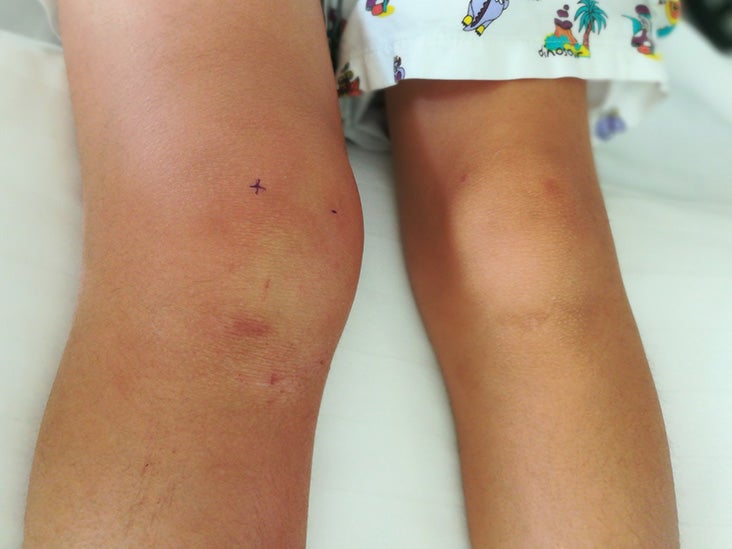

The swollen knee may feel "squishy," like a water balloon. An inflamed knee bursa can fill with excess fluid, causing swelling, or water on the knee. When a bursa becomes inflamed it is called bursitis. The knee has 11 bursae, and 2 of them are especially susceptible to bursitis.
#Fluid in knee skin#
These slippery cushions reduce friction between bone and surrounding soft tissue, such as skin and muscle. Throughout the body are tiny, thin, fluid-filled sacs called bursae.

Chronic or long-standing swelling may lead to joint tissue damage, cartilage degradation, and bone softening, therefore treatment is usually recommended. Whether water on the knee is mildly annoying or painfully debilitating, a person will want to identify the likely cause and treat the symptoms to help reduce the likelihood of future problems. formula (rest, ice, compression, and elevation) or may require medical treatment. 1 The swollen knee may also be painful, red, and/or difficult to put weight on.ĭepending on the underlying condition, a swollen knee may be treated at home using the R.I.C.E. For example, a person may find it difficult to fully bend or completely straighten a swollen knee, and the joint may naturally bend 15° to 25° while the leg is at rest. Swelling in a knee joint may limit knee flexibility and function. Fill out our online appointment request form to schedule your consultation with Orthopaedic & Spine Center of the Rockies today.Knee swelling from mild knee osteoarthritis, non-septic knee bursitis, or a minor injury can be treated at home with over-the-counter medication and the R.I.C.E. Knee injuries don’t have to be catastrophic, so there’s a chance that your knee pain is caused by an undiagnosed injury such as damaged cartilage, a torn ligament or meniscus or dislocation.īecause there are many causes of knee pain without injury it’s necessary to seek treatment with experienced doctors who can diagnose your condition. This autoimmune disease is similar to osteoarthritis, but is often not localized to a single joint, and is indicated by stiffness, swelling and pain. It can be caused by past injury, poor posture or obesity. Inflammation and swelling of the knee joint itself, this condition is caused by the deterioration of the knee. Sometimes, fluid may need to be drained from the cyst. In many cases, a popliteal cyst will go away of its own accord. It can be a sign of an undiagnosed knee injury. Because of the swelling, it can restrict movement. Baker’s cyst:Īlso known as a popliteal cyst, a Baker’s cyst is a fluid-filled swelling at the back of the knee. In some cases, rest alone can combat tendinitis, but severe cases require medical intervention. It’s characterized by a dull ache in the knee that increases with use. Tendons are the tissue that binds muscle to bones, and tendinitis is common in the knee. This painful condition may be accompanied by redness around the joint, tenderness at the knee and in some cases, fever. When they become infected or irritated, they can become inflamed, leading to a condition known as bursitis.

Tiny sacs of fluid cushion the bones in the knee joint. You’ll need to consult with a physician to determine the cause of your knee pain, but there are several common causes of knee pain without injury. Other times, patients can suffer knee pain without injury and are unsure of the source of their discomfort. Sometimes the cause of your knee pain is obvious: a twist, misstep or strain can strike at any time during a walk or a run.


 0 kommentar(er)
0 kommentar(er)
